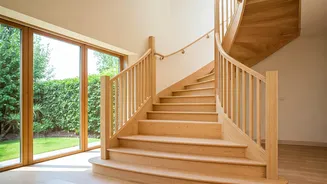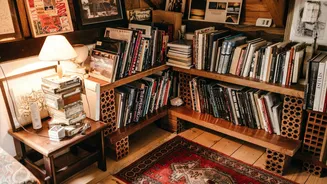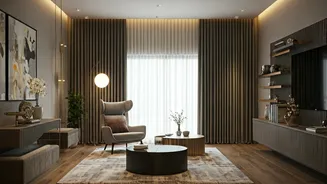Understanding East Facing
East-facing homes are considered auspicious in Vastu, symbolizing new beginnings and opportunities. The rising sun’s energy is believed to bring positive
vibrations into the house. In Vastu, the direction of the main entrance significantly impacts the overall energy of the home. Homes with entrances facing east are often seen as benefiting from enhanced prosperity and positive energy flow. This is primarily because the east direction is associated with the sun, symbolizing vitality and growth. It's crucial, however, to meticulously plan every aspect of the house, including the staircase, to capitalize on the inherent benefits of the east-facing orientation.
Ideal Staircase Placement
According to Vastu, the ideal placement for a staircase in an east-facing house is in the southwest or the south-west direction. This zone is associated with stability and grounding. Constructing the staircase in this area helps balance the energy flow. However, it is essential to ensure that the staircase does not obstruct the flow of natural light and air. Avoid placing the staircase in the northeast corner of the house because it is considered a sacred area that should remain clutter-free. Stairs in the northeast can lead to health and financial issues. When considering design, ensure that the staircase is built in a clockwise direction, going up from east to west or south to north, as per Vastu principles. Also, the number of steps in the staircase should ideally be an even number, excluding zero, to ensure positive energy and harmony.
Staircase Direction & Design
The direction in which your staircase ascends is also of high importance in Vastu. The best direction for ascending stairs is from east to west or from south to north. This ensures the positive flow of energy within the home. When designing the staircase, it is important to choose the right materials. Wood is considered an auspicious material for the staircase, as it is associated with stability. Avoid using black granite or marble for steps. Also, proper ventilation is essential. Ensure that the staircase area is well-lit and airy. Consider installing windows or providing openings to allow natural light and air to circulate freely. Proper lighting and ventilation are not only beneficial from a Vastu perspective but also enhance the overall aesthetics of the home.
Materials & Colors
The choice of materials and colors can significantly impact the Vastu of your staircase. It is best to use wooden steps. It provides the required stability and also has positive energy. Avoid the use of dark-colored materials, like black granite or marble, as they can absorb positive energy. Instead, opt for lighter shades. Color plays a vital role in balancing energy. According to Vastu, light colors, such as white, cream, or light shades of yellow and blue, are appropriate. These colors reflect light and promote positivity. Avoid using red or black, as they represent negativity and can disrupt the energy flow. Furthermore, ensure that the staircase area is kept clean and free from clutter to prevent any negative energy accumulation. Maintaining a clean and organized staircase can create a more harmonious environment.
Common Vastu Errors
Several common mistakes can negatively affect the Vastu of your staircase. One of the most significant errors is building the staircase in the northeast corner. This area is considered sacred and should remain open and free of obstacles. Another frequent mistake is constructing the staircase in a counter-clockwise direction, which is believed to restrict the flow of positive energy. Other significant errors include having the staircase under the beam. This can create structural and energy imbalances. Also, avoid placing the staircase directly in front of the main entrance door because it is believed to block the entry of positive energy. Correcting these errors can help improve the overall energy flow and promote a more harmonious living environment.
Remedies & Corrections
If you find that your staircase does not align with Vastu principles, several remedies can help balance the energy. One of the simplest solutions is to use color correction. Use light colors on the walls and staircase to reflect the light and create a sense of openness. To counteract negative energy, you can place Vastu pyramids on the walls near the staircase to neutralize the adverse effects. Mirrors can also be strategically placed to reflect light and create a more positive atmosphere. If the staircase is in the wrong direction, you can't relocate it, but you can alter the interior by adding appropriate colors and décor items. A well-designed interior can help mitigate any negative Vastu effects. Also, regularly clean and maintain the staircase area to ensure a positive flow of energy. A clean and well-maintained staircase can significantly contribute to overall well-being.
Maximizing Positive Energy
To maximize positive energy in your staircase area, you can incorporate certain design elements. Include natural light, which is crucial. Open windows or install skylights to allow natural light to filter in. Plants can also be added, as they are known to bring positive energy and purify the air. Use Vastu-compliant paintings on the walls near the staircase. Paintings of mountains or sunrise can bring positive energy to the space. Keep the area clutter-free. A clean and organized staircase area will allow the positive energy to flow freely. Finally, ensure the staircase is well-lit to prevent any negativity. Consider using warm white lighting or natural light sources. By implementing these elements, you can create a staircase that is not only functional but also promotes a harmonious and positive living environment.










